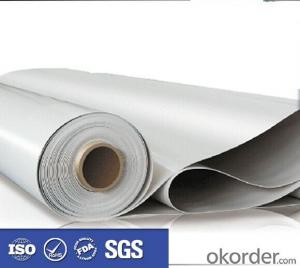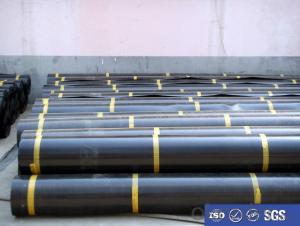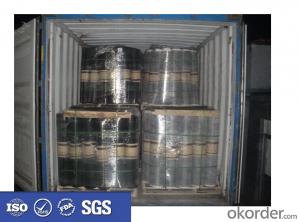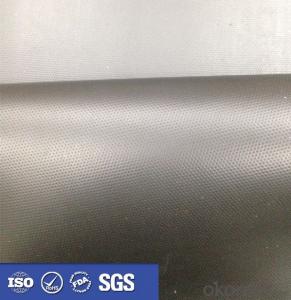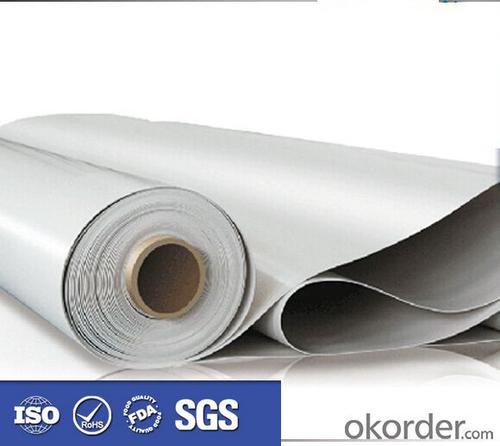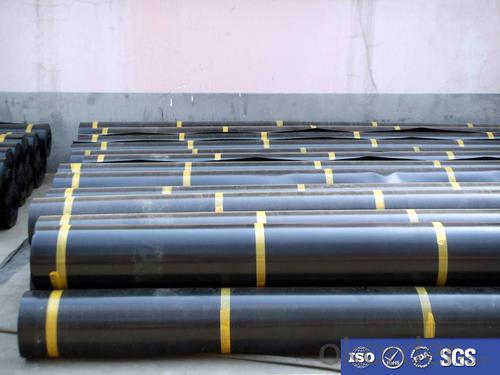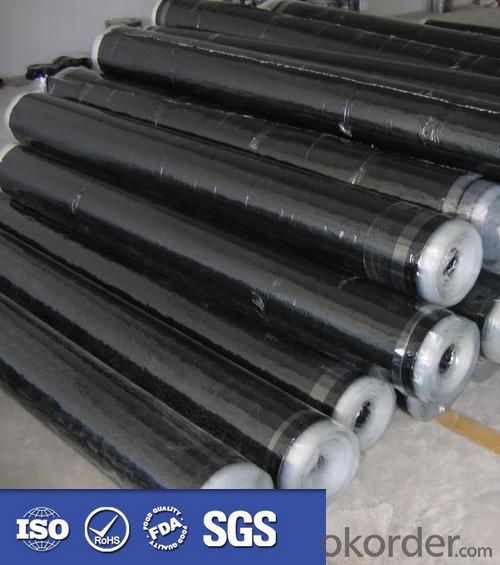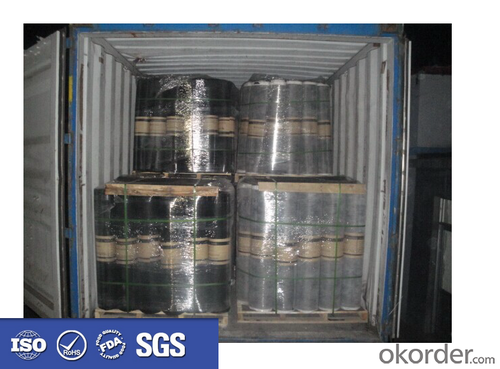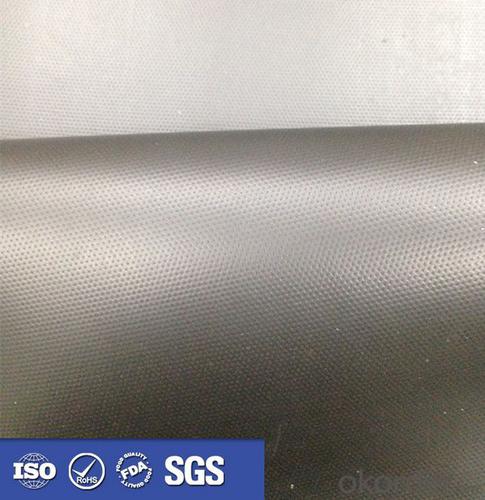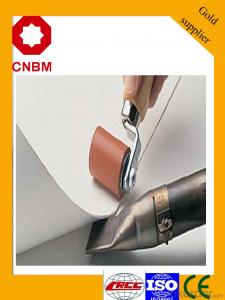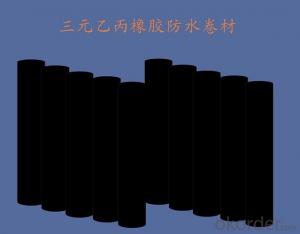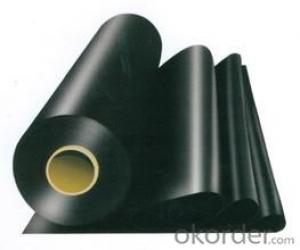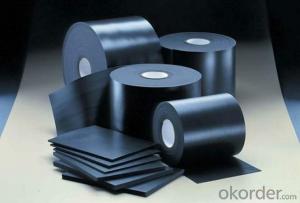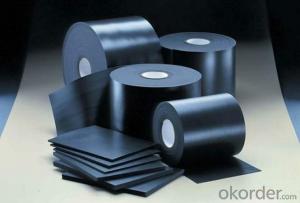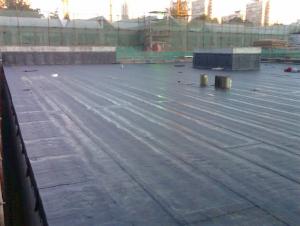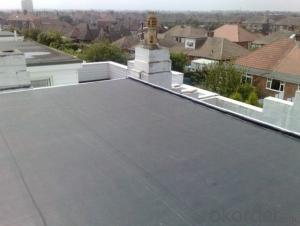EPDM MEMBRANE or COILROOF WATERPROOF SYSTEM
- Loading Port:
- Qingdao
- Payment Terms:
- TT OR LC
- Min Order Qty:
- 2000 m²
- Supply Capability:
- 8000000 m²/month
OKorder Service Pledge
OKorder Financial Service
You Might Also Like
Description Of EPDM MEMBRANE or COILROOF WATERPROOF SYSTEM:
Self adhesive waterproof rolling material:
thickness:1.2/1.5/2.0mm
length/roll:10/20m
width/roll:1.02m
Low temperature:-15 -20,-30
Main Features of EPDM MEMBRANE or COILROOF WATERPROOF SYSTEM:
1) High tear
2) High puncturing strength
3) Great temperature resistance.
4) High dimensional stability
Specifications of EPDM MEMBRANE or COILROOF WATERPROOF SYSTEM:
Material | EPDM Self-adhesive Waterproof Membrane |
Size | 1.2m (width)*20m (length) or customized, weldable type 2.05m or 4m width |
Thick | 1.2mm, 1.5mm, 2.0mm |
Type | Vulcanized & Weldable |
Pattern | Non-reinforced (homogeneous) |
Certificate | ISO9001/14001 |
Applications of EPDM MEMBRANE or COILROOF WATERPROOF SYSTEM:
1.It is widely used in civil and industry construction.
2.The waterproof,dampproof of the roofs,basements,toilets etc;
3.And the waterproofing of subway,underground,bridges,car parking,tunnels,reserviors,pool etc.
4.SBS modified bitumen waterproof membrane is specially suitable to the building waterproofing in cold area and to the buildings of changeable constructions
5.APP specially suitable to areas of high temperature and of strong sunshine.
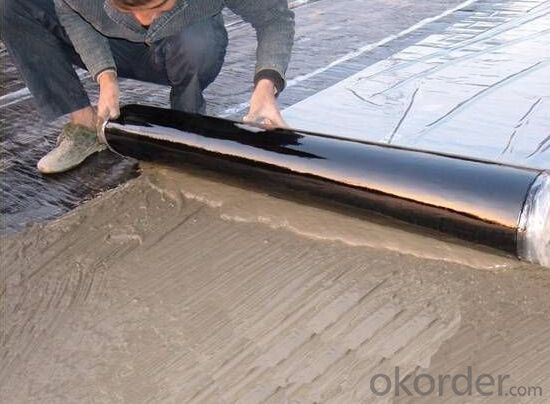
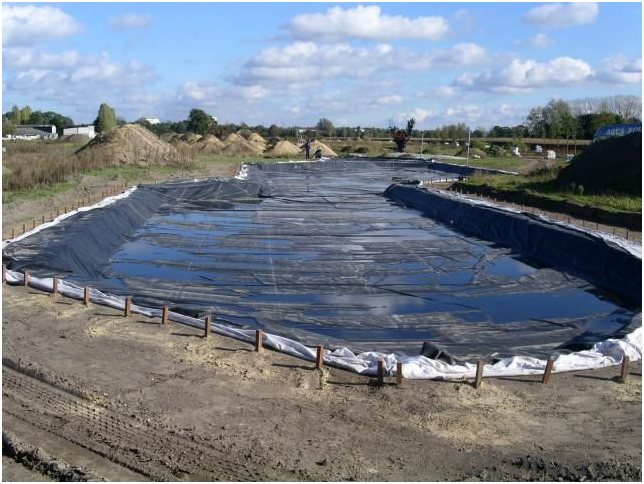
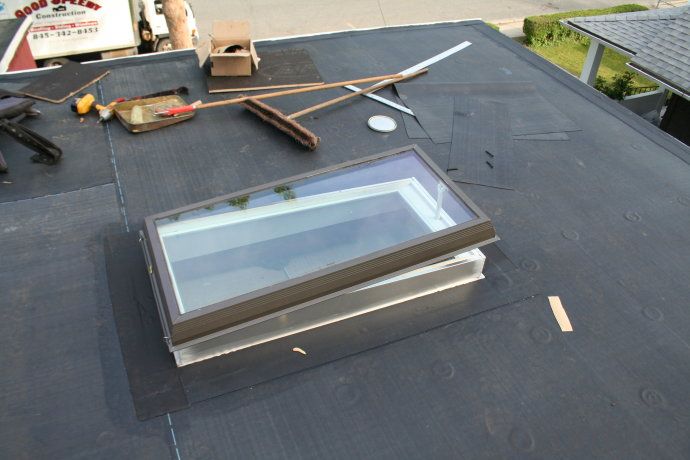
FAQ:
1. What are we supplying?
We are specialized in producing Colorful Asphalt Roof Shingle, SBS/APP modified bitumen waterproof membrane, Self adhesive bitumen waterproof membrane, PVC waterproofing membrane, EPDM rubber roofing membrane, Single Component Polyurethane Waterproof Coating, and Spray Polyurea Waterproof Coating.
2. How Many years experience do we have?
We have been exported to more than 20 countries in the past 15 years.
3. How long do we usually reply your request?
We always reply our customer within 24 hours.
- Q: Can a waterproofing membrane be used on roofs with skylights?
- Yes, a waterproofing membrane can be used on roofs with skylights. The membrane is typically installed around the skylight opening to ensure a watertight seal and prevent any leaks or water damage.
- Q: Are waterproofing membranes suitable for exterior use?
- Waterproofing membranes are indeed suitable for use on the exterior. These specific membranes are designed to create a barrier against the infiltration of water and are commonly employed in a range of outdoor applications such as rooftops, balconies, and foundations. They are constructed from durable materials capable of withstanding exposure to harsh weather conditions, UV rays, and temperature fluctuations. By preventing water damage, moisture accumulation, and potential structural problems caused by water infiltration, these membranes offer valuable protection. Furthermore, they can be applied to a variety of surfaces including concrete, metal, and wood, making them highly versatile for different outdoor environments. In summary, waterproofing membranes present a reliable solution for safeguarding exterior surfaces from water damage and extending their lifespan.
- Q: How do waterproofing membranes prevent water leakage?
- Waterproofing membranes prevent water leakage by creating a physical barrier between the structure and the water. These membranes are made of materials that are impermeable to water, such as rubber, PVC, or bitumen. When applied correctly, they form a continuous and seamless layer that prevents water from seeping through cracks, joints, or other vulnerable areas. This barrier effectively stops water from infiltrating the structure, ensuring its protection against water damage and leakage.
- Q: Can a waterproofing membrane be used on steel surfaces?
- Yes, a waterproofing membrane can be used on steel surfaces. Waterproofing membranes are designed to create a barrier against moisture and water infiltration, and they can be applied to various surfaces, including steel. Steel surfaces are commonly found in construction projects, such as roofs, balconies, and foundations. Applying a waterproofing membrane on steel surfaces helps to prevent corrosion and damage caused by water exposure. It is important to select a waterproofing membrane that is suitable for steel surfaces and ensure proper surface preparation and application techniques for optimal performance and durability.
- Q: Are waterproofing membranes suitable for stadium structures?
- Waterproofing membranes are well-suited for stadium structures. Stadiums are exposed to different weather conditions, such as rain, snow, and humidity, which can potentially harm the structure if proper waterproofing measures are not taken. By providing a protective layer that prevents water infiltration, waterproofing membranes safeguard the stadium from moisture-related problems like leaks, mold, and corrosion. Water accumulation on large roof areas and expansive seating areas is common in stadium structures, making waterproofing essential. Membranes can be applied on various surfaces, such as concrete, metal, and wood, offering a versatile and effective waterproofing solution for stadiums. Furthermore, waterproofing membranes offer durability and longevity, which is crucial for stadiums that experience heavy usage and constant exposure to the elements. They are designed to withstand thermal expansion and contraction, as well as UV radiation, ensuring long-term protection for the structure. Moreover, architects and engineers can customize waterproofing membranes to meet specific design requirements, seamlessly integrating them into the stadium's overall aesthetic. These membranes come in various colors, textures, and finishes, allowing them to blend with the surrounding materials and enhance the stadium's visual appeal. In conclusion, waterproofing membranes are a reliable and effective solution for protecting stadium structures from water damage. They provide durability, versatility, and customization options, making them suitable for any stadium construction or renovation project.
- Q: Can a waterproofing membrane be used for underground stormwater detention systems?
- Underground stormwater detention systems can benefit from the use of a waterproofing membrane. This membrane is specifically designed to keep water out and can be applied to different surfaces, such as concrete, to create a tight seal. This makes it a perfect choice for underground stormwater detention systems where the control and containment of stormwater runoff are necessary. By using a waterproofing membrane, the system can remain completely sealed, preventing any leaks or seepage that could compromise the system's integrity or contaminate the surrounding soil and groundwater. Moreover, the membrane also provides protection to the concrete structure of the detention system, shielding it from the damaging effects of water and other potential contaminants. Consequently, incorporating a waterproofing membrane into underground stormwater detention systems is a dependable and efficient approach to ensuring their longevity and functionality.
- Q: Can a waterproofing membrane be used for balconies and terraces?
- Yes, a waterproofing membrane can be used for balconies and terraces. Waterproofing membranes are often used in construction to protect these outdoor spaces from water damage and leakage. They provide an effective barrier against moisture and ensure the durability and longevity of balconies and terraces.
- Q: Are waterproofing membranes resistant to frost damage?
- Yes, waterproofing membranes are generally resistant to frost damage. Waterproofing membranes are designed to be durable and able to withstand various weather conditions, including freezing temperatures. They are typically made from materials such as modified bitumen, PVC, EPDM, or TPO, which have excellent resistance to frost and other environmental factors. These materials are engineered to remain flexible and elastic even in cold temperatures, ensuring that the waterproofing membrane remains intact and effective in preventing water penetration. Additionally, proper installation techniques and maintenance can further enhance the resistance of waterproofing membranes to frost damage.
- Q: Can a waterproofing membrane be used for planter boxes and green roofs?
- Yes, a waterproofing membrane can be used for planter boxes and green roofs. In fact, it is highly recommended to use a waterproofing membrane in these applications to prevent water leakage and damage to the underlying structures. Planter boxes and green roofs often require a reliable waterproofing system to ensure the longevity and functionality of the design. A waterproofing membrane acts as a barrier, preventing water from seeping into the underlying structures and causing potential damage. For planter boxes, a waterproofing membrane is essential to prevent water from leaking out and damaging the surrounding structures. It also helps to retain the moisture within the planter box, ensuring that plants receive adequate hydration. Similarly, green roofs require a waterproofing membrane to prevent water from infiltrating the roof structure and potentially causing leaks or structural damage. The membrane acts as a protective layer, ensuring that water is properly drained and does not accumulate on the roof surface. When selecting a waterproofing membrane for planter boxes and green roofs, it is important to consider factors such as durability, flexibility, and resistance to root penetration. Some membranes are specifically designed for these applications, providing additional features like root barriers to prevent plant roots from penetrating and damaging the membrane. In conclusion, a waterproofing membrane is an essential component for planter boxes and green roofs. It helps to prevent water leakage, retain moisture, and protect the underlying structures from potential damage caused by water infiltration.
- Q: Can a waterproofing membrane be used in areas with chemical exposure?
- In areas where there is chemical exposure, it is possible to use a waterproofing membrane. However, it is vital to choose a waterproofing membrane that is specifically created to withstand chemical exposure. Not all waterproofing membranes are equal, and some may not be suitable for use in areas with chemical exposure. Waterproofing membranes that are resistant to chemicals are typically made from materials like polyurethane, epoxy, or polyurea, which are known for their ability to withstand various chemicals. These membranes are designed to act as a protective barrier against moisture and chemicals, preventing them from penetrating the underlying surfaces. When selecting a waterproofing membrane for areas with chemical exposure, it is crucial to consider the particular chemicals that will be present. Different chemicals can have varying effects on materials, so it is essential to choose a membrane that is specifically designed to resist the chemicals in the environment. It is recommended to consult with a professional or the manufacturer to ensure the appropriate selection of a chemical-resistant waterproofing membrane for the specific application.
Send your message to us
EPDM MEMBRANE or COILROOF WATERPROOF SYSTEM
- Loading Port:
- Qingdao
- Payment Terms:
- TT OR LC
- Min Order Qty:
- 2000 m²
- Supply Capability:
- 8000000 m²/month
OKorder Service Pledge
OKorder Financial Service
Similar products
Hot products
Hot Searches
Related keywords
